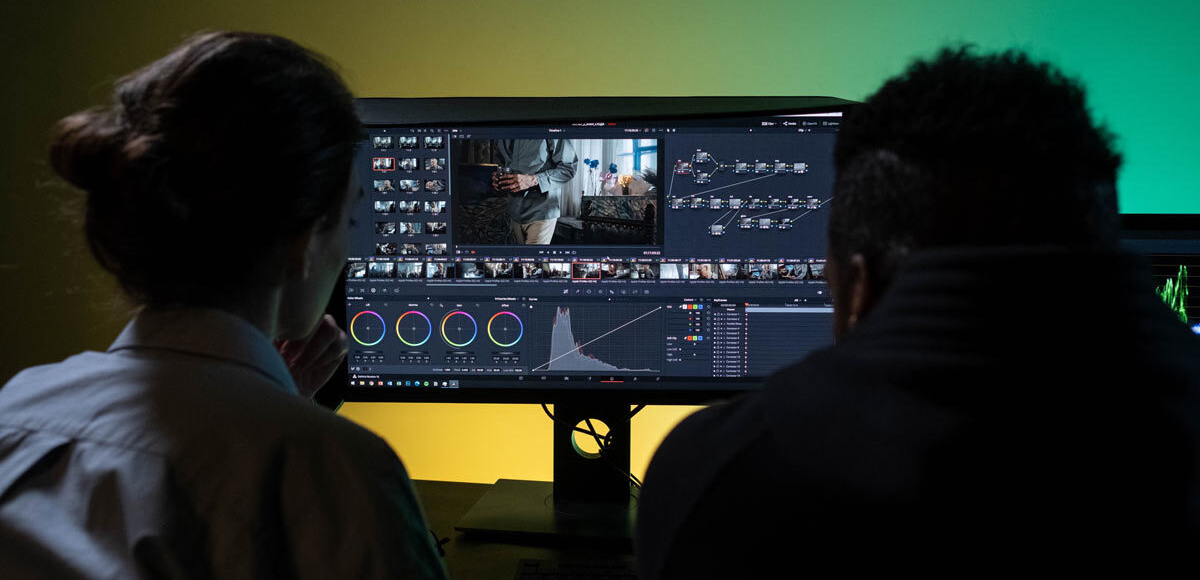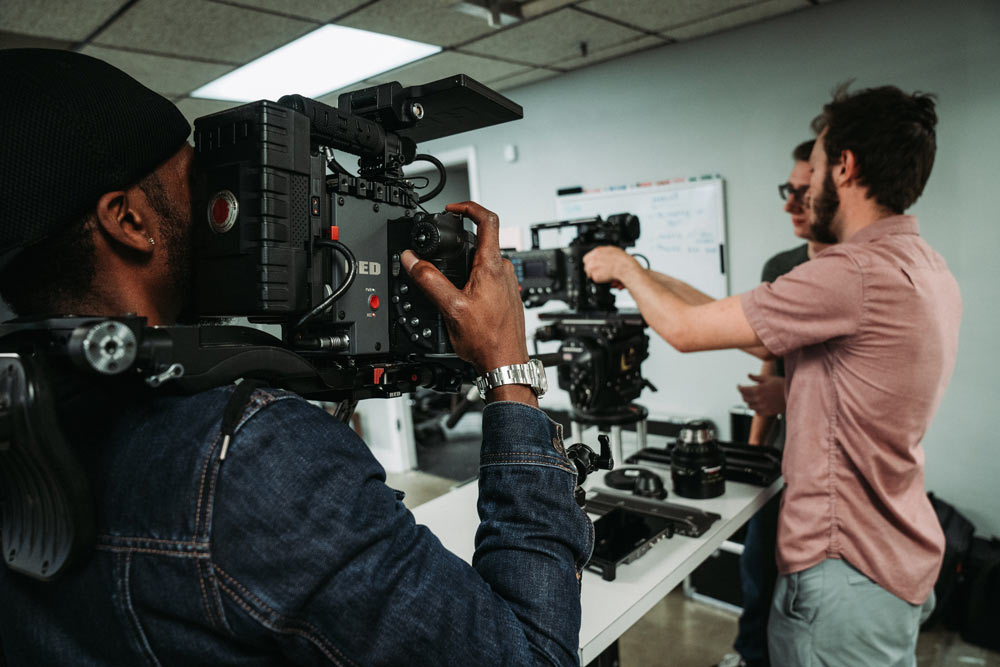
The Keys to Giving Effective Creative Feedback

Written by James Grosch
When it comes to creative partnerships, there are many skills that are necessary for success. Any project that our team works on blends a myriad number of artistic disciplines, from writing to 3D rendering to illustration. But there’s one talent that is arguably the most important but often gets overlooked: being able to give great feedback. While it’s not as exciting as something more “artsy,” feedback is a critical component of the creative process. In fact, I’d wager that communication is the number one requirement for a successful creative partnership.
I’ve worked on countless creative projects ranging from entertainment to commercial to enterprise. Throughout these experiences, I’ve been on both sides of the equation, having to give and receive feedback. I’ve seen how effective feedback can elevate a project, and I’ve seen how poor feedback can cause delays and frustration. There’s a clear pattern between what makes for great feedback, as well as pitfall to avoid. In this article, I’m going to share with you everything I’ve learned on how to give effective feedback when working on creative projects.
Whether you’re a director or producer giving feedback to your team or a client giving feedback to an agency, knowing how to give great feedback will make your life so much easier. You’ll get the results you want and produce better work. Luckily, feedback is a skill. Like any skill, you can learn how to improve it.
Here are the 3 keys to giving effective creative feedback.
1) Give Feedback with Empathy

One of the reasons why I love working with the team at Elevation is that there’s a culture of empathy and respect that permeates everything the company does. This applies to small things like Slack messages to big things like massive projects for national broadcast. Empathy is a critical factor to getting projects done on time and at a high quality.
Why? Empathy is a crucial part of effective communication. Empathy helps you see things from the other person’s perspective. When you communicate with empathy, you can better relate to who you’re talking to and figure out how to get towards a shared goal.
A common pitfall is to think that being empathetic means you should just be 100% positive. After all, if you were in the other person’s shoes, wouldn’t you want to only hear positive feedback about your work? Ignoring any faults would actually be detrimental to the project, and you’d be doing the other person a disservice by not expressing what needs improving. Remember, you are both on the same team. If you’re working with the right creative partner, they are as invested in the project’s success as you are.
Here are a few tips on how to give empathetic feedback.
- Have a positive attitude: While I said you shouldn’t be 100% positive, there’s a huge benefit to approaching feedback with a positive attitude. If you only focus on what’s wrong, you’ll come off as difficult to please. Focus on both what’s working and what needs to be fixed, and frame everything that you’re saying as getting the project closer to its goal.
- Choose your words carefully: There’s a big difference between “That’s bad” and “That isn’t working,” even if they communicate the same essential point. You can still be direct without being abrasive. Once again, think “if I was working on this, what would I rather hear?”
- Don’t make it personal: Insults or personal slights are a complete red flag, and they can cause a creative partnership to dissolve. Insults have a demoralizing effect, and almost always make it impossible to have a productive creative environment. Keep your comments about the art, not the artist. Ironically, this is something I’ve seen happen more in purely creative endeavors rather than projects for business or enterprise.
Ultimately, it comes down to respect. Respect is about treating others as you would want to be treated, as well as communicating with honesty.
2) Be Thoughtful and Specific in Your Feedback

Nothing can waste time and budget like vague feedback. Good feedback helps push a project in a certain direction. Vague feedback will send your team in circles, and will waste money by having artists redo work unnecessarily.
Remember that feedback is a tool, not a sounding board. Any piece of feedback you give should help drive the project closer to its goal. As you come up with feedback, think if it’s helping steer things in that direction.
Here are a few ways to give thoughtful feedback:
- Take your time to gather your thoughts. Don’t just shoot off an email immediately after reviewing a new revision. Try to review it a few more times before responding, or sleep on it if there’s enough time built into the schedule. While a gut reaction is important, taking time can help you solidify why you had that gut reaction. Sometimes, you’ll have to give feedback on the fly, like in an editing session or while on set. In these scenarios, you don’t have the luxury of time. But it’s still worth taking a minute to think through your feedback. If you’re running into big issues, take 15 minutes or break for lunch early. Finding ways to let your thoughts marinate can help you get to the solution faster, saving you time in the long run.
- Be specific. Vague proclamations of “it’s getting there” or “it needs work” won’t help. Be specific on what needs improvement. Is it the pacing? The audio mix? The character design? Figure out what specific aspects are working and what specific aspects are not working.
- Offer solutions if you can: If good feedback helps steer the project in the right direction, great feedback will give a suggestion on how to get there faster. Your idea might not be the exact right solution, but it could be the thing that helps your team discover where to go from there.
Remember that you’re working with a team of experts in their fields, so it’s okay if you don’t have the exact word for how to express what’s not working. If you have a vague feeling that something isn’t right and want to figure out the root cause, talk with one of the team members. Maybe the project just isn’t engaging you for some reason, but you’re not sure why. The director could come up with ways for improving the pacing or performances, or the artistic director could come up with a more vibrant color palette.
3) Be Clear and Concise with Your Communication
Now you know how to form your feedback, here’s how to deliver it effectively. Great creative feedback requires clear and concise communication. You could craft feedback that’s empathetic, respectful, and specific. But if you don’t deliver it in a clear manner, you can waste time by confusing your team or contradicting yourself.
Here’s a few best practices for how to deliver your feedback.
- Send all of your feedback in a single bullet point list. One of the worst things you can do is send different pieces of feedback across multiple emails. I’ve worked on several projects where someone has sent me feedback on a revision throughout the day in multiple emails. This ends up being an extremely ineffective way to communicate. Even with email threading, it’s easy to lose track of one of the notes. Also, this “send notes as they come to me” approach can cause contradictions. There have been multiple times where I’m working on addressing a note when I get an email later in the day that nullifies that note or means I need to start that work over again. By far the best way is to send all of your feedback for that round in a single email, formatted in a bullet point list. If there are multiple members of your team giving feedback, send all of that feedback together at once. Of course, there might be a scenario where you might realize something after you send the initial feedback. This can be unavoidable, but keeping this to a minimum will help the project out tremendously.
- If working with video, include timecodes in your feedback. Referencing exactly what moment your feedback applies to will save a lot of time.
- Keep your notes concise. You can explain your thinking in your feedback, but try to keep things short and sweet. A long winded, meandering email could lead to confusion, and whoever is receiving the feedback might miss a note in the middle of a paragraph. That’s why I’m such a big proponent of using bullet points for delivering feedback.
If you approach feedback with empathy, take time to craft it with thought, and then deliver it with clarity, you’ll be a tremendous asset to any creative project’s success. Communication is the key to a successful creative partnership, and improving your feedback could make the difference the next time you collaborate with someone.
Topics: creative studio partnership
